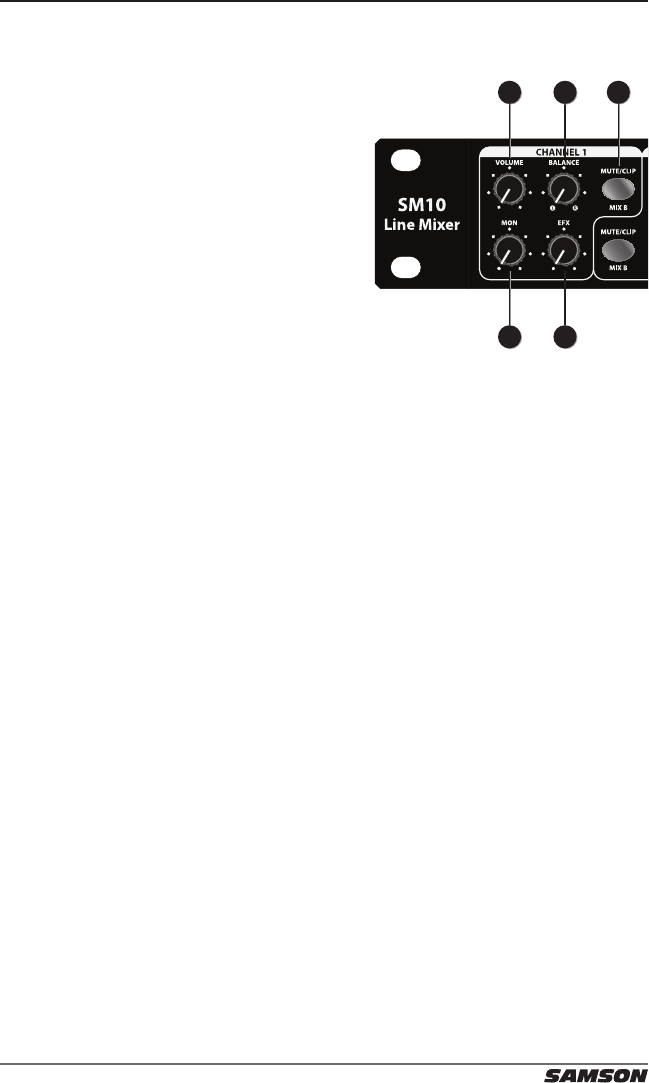
SM10
4
Controls and Functions
The following section details each part of the SM10 controls and functions.
1. VOLUME – This knob controls the volume
of channel inputs and is used to continu-
ously adjust the loudness of the various
signals being blended together at the
Main Outputs. There is a detent at the 12
o’clock position of the knob, which indi-
cates unity gain.
Moving the knob counterclockwise from
the 12 o’clock position causes the signal
to be attenuated. Moving it clockwise
from the 12 o’clock position causes the signal to be boosted.
For best signal-to-noise ratio, all Volume controls for channels carrying
signal should generally be kept at or near the 12 o’clock position. Channels
that are unused should have their Volume controls kept fully counterclock-
wise at their minimum level.
2. BALANCE – When the both inputs of a channel are connected, the left
input signal is automatically panned hard left and the right input signal is
automatically panned hard right. In this case, the Balance knob controls
the relative levels of the paired input signals. When the knob is placed at
its center detent position, both signals are at equal strength. When moved
left of center, left input signal remains at the same strength but the right
input signal is attenuated. When the knob is moved right of center, the
left input signal remains at the same strength but the right input signal is
attenuated.
When only the left input is connected, the Balance knob functions as a
constant level Pan control, allowing you to continuously place the incom-
ing signal anywhere in the left-right stereo eld.
3. MON (Monitor) Send – The MON send knob allows you to route the signal
to the MON outputs. The MON send is pre-fader so the signal is unaected
by the position of the channel Volume control. These sends are usually
used to create a separate mix for a monitor system. When the MON send
knob is at the 12 o’clock center detent position, the signal is routed with
unity.
21
3
4
5
6
7
8
9
11
12
13
10
14 15
1617
18
19
20
21
2223
2425


















